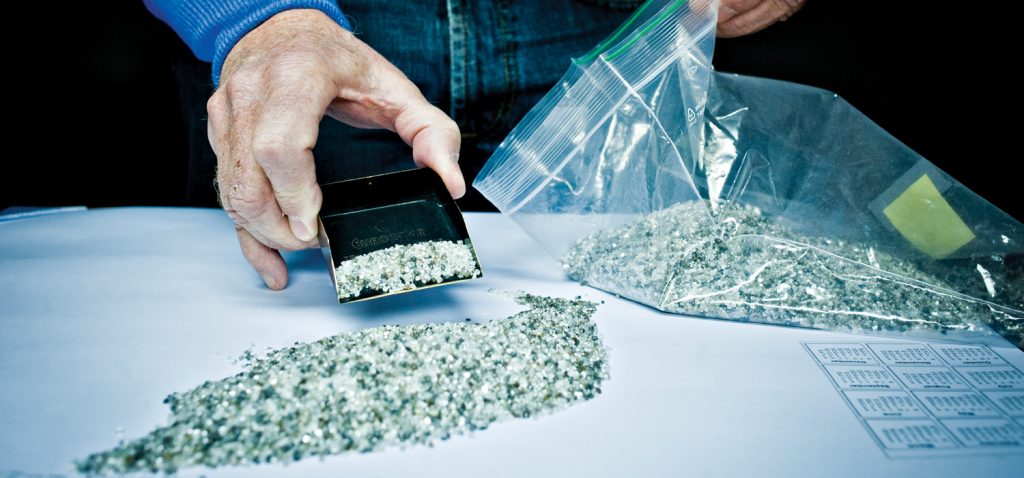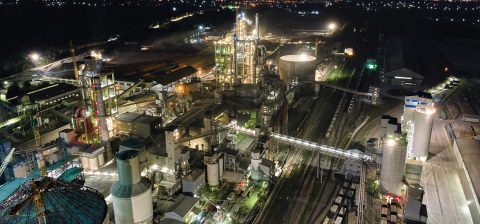SA Mining
Diamond Trading: Belgium And Africa
With diamonds being a key industry for Belgium, how important is the relationship with African diamond producers?
As you know, 86% of all rough diamonds and 50% of all polished diamonds are traded in Antwerp, Belgium. In terms of production, 80% of all rough diamonds are produced in only five countries: the Russian Federation, Botswana, Canada, the Democratic Republic of the Congo (DRC) and Australia.
If we take a closer look at exports to Belgium, we see that Africa contributes a significant portion of direct imports in rough diamonds. In 2020, direct imports from Africa amounted to nearly 18 million carats, or roughly 29% of all imports into Belgium.
Some African countries, like Lesotho, market their entire production via Antwerp. The other big producing countries exporting rough diamonds to Belgium are the Russian Federation, Australia and Canada.
How important is the diamond industry to Belgium’s economy and how much does it contribute to Belgium’s GDP?
Diamonds remain an unmistakably important pillar of Belgium’s economy. They still have a significant impact on Belgium’s trade balance, with diamonds representing 5% of all Belgian exports and 15% of all Belgian exports outside the European Union. With 6 600 direct and 26 000 indirect jobs created, the diamond industry also continues to be an important employer.
As for all industries, 2020 was an unpredictable and difficult year that brought most of the diamond industry to a standstill. However, by summer last year, it was clear that the industry was quick to rebound. By Q4 of 2020, it appeared that in comparison to the rest of the luxury segment, diamonds and diamond jewellery were performing extremely well.
GDP contribution declined from 8% a few years ago. What is it currently and is Belgium looking to grow its diamond business?
Rather than looking at the GDP contribution, we believe it is key to look at Belgium’s leading position in the global diamond trade – for more than 575 years now – and to the importance of diamonds in our trade balance.
Belgium continues to be the market leader in diamond trade, and with good reason. Antwerp is still home to a small but highly skilled group of diamond cutters who specialise in the processing of the most remarkable diamonds that come on the market. But Antwerp is first and foremost a business centre, backed by the most sophisticated commercial infrastructure and expertise.
By providing this stable environment, where sustainability and transparency are key elements, Antwerp continues to attract traders from all over the world.
We want to continue to show the world why Belgium is still the place to be for trading diamonds. We do so by supporting the industry at large in promoting digitalisation, by reinforcing the Kimberley Process and by transforming the sector into a sustainable business model that works for every player in the value chain.
Diamonds play an important role in our bilateral relations and Belgium is constantly seeking to intensify its ties with producer countries, both politically and economically. We are in constant dialogue with these countries in order to create a sustainable and transparent industry. This is why we contribute fully to the work of the Kimberley Process Certification Scheme, as we have done from the very beginning.
What quantities of diamond exports come from the various African producers?
In 2020, all African countries combined exported almost 18 million carats to Belgium. In that same year, South Africa exported almost 2.2 million carats to Antwerp. That represents 28% of the volume of produced carats in South Africa. A remarkable improvement compared to 2019, where South Africa exported only 17% of its rough diamonds to Antwerp.
With a production value of $958-million, South Africa launched itself into the top five producing countries in the world, together with two other African countries, Angola and Botswana.
Are you able to comment on the quality of the diamonds from Africa?
In diamonds, there is no one-size-fits-all answer. It is one of the most difficult minerals to mine, in terms of finding a deposit and estimating quality and viability of a mining project. The quality of African diamonds has a large range, depending on the geography of the mine, the technology available and the expertise in the company that sources the diamonds.
For example in the DRC most diamonds are alluvial and largely produced by artisanal and small-scale miners, compared to Botswana or Lesotho, where we see industrially mined diamonds of high to very high quality in terms of size, clarity and colour.
In recent years, some mining companies have invested heavily in applying new technologies, such as scanning. This is why we see more and more exceptionally large stones being unearthed. Last year for instance, Petra Diamonds found an exceptionally rare blue diamond in the South African Cullinan mine, which was sold in Antwerp, fetching what probably was the highest price per carat ever paid for a rough diamond.
The Letšeng mine in Lesotho is also famous for the size and quality of the diamonds it produces and has the highest average selling price in the world.
Aside from the Nungu Diamonds and Pluczenik family collaboration, what other collaborations exist between the two countries?
There are plenty of links between Belgium and South Africa in the field of diamonds. Just to name a few, one of South Africa’s most respected tender houses, First Element, has its tendering operations in Antwerp, a collaboration that has been very fruitful in past years. Petra Diamonds, the South African miner that operates the Cullinan mine, was able to conduct sales from its Antwerp office in the past two years, generating consistent revenue. Considering many polishing units have closed down in South Africa, the opening of a new factory by the Pluczenik family is a major symbol of the Belgian diamond sector’s commitment towards South Africa.
And it is impossible not to mention De Beers, which is well established in South Africa, where it has been operating for over 130 years, and obviously participates in the whole diamond ecosystem.
How do such collaborations benefit the African diamond industry?
A partnership such as the one between Nungu Diamonds and the Pluczenik family has many positive repercussions. First of all, it is an investment in the South African economy, and it will generate job opportunities and contribute to skills development. It will also bring new technology and all this combined will add local value for the South African diamond sector.
Enabling and empowering producing countries, specifically in Africa, has always been a priority for Belgium. Our sectoral federation has a very active policy on building capacity and knowledge transfer to African diamond producing countries, and offers training in myriad domains, such as valuation, grading, polishing, compliance, etc.
Together with the sector, we also created a forum to exchange with African producing countries on the opportunities and challenges faced by the diamond industry: the African Diamond Conference. We had a very successful physical version in Brussels in 2017 and an online version in 2020, as the conference that was set to take place in Durban had to be postponed due to COVID. We are hoping to be able to organise another edition in the near future.
Are there any latest developments in the diamond space that you would like to share with our readers?
The arrival of synthetic diamonds is clearly a challenge for the natural diamond industry. Consumers are indeed increasingly interested in how their products are sourced and are worried about social and environmental impact.
In different formats, with the different players, we aim to exchange on how to better address the threat of lab-grown diamonds and how to continue to make sure that natural diamonds do good for the communities and for the planet. Transparency and good practices are key elements to ensure a sustainable and socially responsible industry.
By Nelendhre Moodley.





